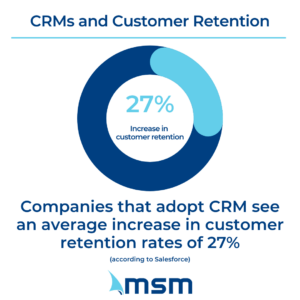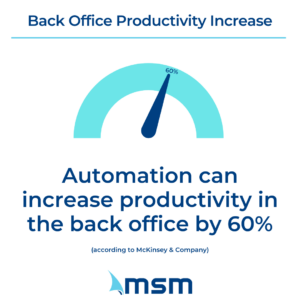The back office is the backbone of any business. It is the fuel that makes the engine of a company function. The back office of a company refers to the administrative and support functions necessary to run a business but are not directly related to sales or customer service.
The traditional back office was characterized by manual processes, paper-based workflows, and siloed departments. However, the back office has undergone a significant transformation in recent years due to technological advances, changing customer expectations, and the need for operational efficiency. This blog post will explore how the modern back office is designed to optimize employee performance, leverage automation for improved efficiency, and focus on improving customer service.
The Traditional Back Office vs. The Modern Back Office
Manual processes and paper-based workflows characterized the traditional back office. Departments were siloed, and there was little communication between them. As a result, there was a lack of visibility into processes, making it difficult to identify inefficiencies and bottlenecks. The traditional back office also relied on spreadsheets and other manual methods for tracking and managing data. These methods were prone to errors, and extracting insights from the data was time-consuming.
In contrast, the modern back office leverages technology to automate processes and increase efficiency. Departments are no longer siloed, and there is more collaboration and communication between them. Automation has streamlined workflows and reduced the need for manual intervention. Data is now stored in centralized databases, with powerful tools for analyzing and visualizing the data. The modern back office has also embraced cloud-based technologies, enabling employees to work from anywhere.
Customer Service in the Modern Back Office
Customer service has become a top priority for businesses, and the modern back office is designed to support this focus. 89% of companies expect to compete primarily based on customer experience, according to a Gartner survey. This shift in priorities has led to adopting technologies and practices in the back office to improve customer service.
 One key technology is customer relationship management (CRM) software, which allows businesses to track and manage customer interactions and data. By using a CRM system, businesses can gain a deeper understanding of their customer’s needs and preferences, and provide better service. As a result, companies that adopt CRM see an average increase in customer retention rates of 27%, according to Salesforce.
One key technology is customer relationship management (CRM) software, which allows businesses to track and manage customer interactions and data. By using a CRM system, businesses can gain a deeper understanding of their customer’s needs and preferences, and provide better service. As a result, companies that adopt CRM see an average increase in customer retention rates of 27%, according to Salesforce.
In addition to CRM, businesses also leverage automation to improve customer service. Chatbots, for example, can provide instant support and answers to frequently asked questions, reducing response times and improving customer satisfaction. In addition, 69% of customers prefer using chatbots for quick communication with businesses, according to a study by Drift.
Furthermore, businesses are utilizing data analytics to gain insights into customer behavior and preferences. By analyzing data, businesses can make informed decisions about improving customer service and identify areas for improvement. In fact, companies that use data-driven insights to improve customer experience see an average increase in customer satisfaction of 20%, according to McKinsey.
Customer service is a critical component of the modern back office, and businesses are adopting new technologies and practices to meet the growing demand for exceptional customer experiences. By leveraging CRM, automation, and data analytics, businesses can gain a deeper understanding of their customers and provide better service, ultimately leading to increased customer retention and satisfaction.
Automation in the Modern Back Office
Automation is revolutionizing the back office, allowing businesses to streamline processes, reduce costs, and improve efficiency. According to a report by McKinsey & Company, automation has the potential to increase productivity in the back office by up to 60%. 
One example of automation in the back office is the use of robotic process automation (RPA), which involves using software to automate routine and repetitive tasks, such as data entry or invoice processing. According to a report by PwC, RPA can reduce costs by up to 80% and increase processing speed by up to 90%. This can free up employees to focus on higher-value tasks, such as analyzing data or solving complex problems.
Another example of automation in the modern back office is the use of machine learning algorithms, which can analyze large volumes of data and provide insights that can help businesses make better decisions. For example, machine learning algorithms can analyze customer data to identify patterns and trends, which can help businesses improve customer retention and loyalty. According to a report by Gartner, by 2023, businesses that use machine learning will see a 25% improvement in customer satisfaction rates.
Document capture and automation (DCA) solutions can help businesses streamline document processing and improve data accuracy. According to a report by AIIM, 62% of businesses see improved data accuracy as the biggest benefit of DCA solutions. In addition, by automating the capture and processing of documents, businesses can reduce errors and improve the speed of document processing, which can lead to faster decision-making and improved customer service.
Automation is transforming the modern back office, offering businesses the opportunity to increase efficiency, reduce costs, and improve customer service. By adopting automation technologies, businesses can free up employees to focus on higher-value tasks, improve data accuracy, and provide better service to their customers.
How to Optimize the Back Office
To optimize the back office, businesses can take several steps to improve employee performance, leverage automation for increased efficiency, and focus on customer service. Here are some tips on how to optimize the back office:
- Streamline Processes: By streamlining processes, businesses can save time, reduce errors, and increase efficiency. Analyze current workflows and identify areas where processes can be simplified or automated. Look for opportunities to eliminate redundancies and reduce manual tasks. This can include implementing software solutions to automate tasks like data entry, invoicing, and inventory management.
- Train Employees: Properly trained employees are more confident and productive in their roles. Provide regular training opportunities to keep employees up-to-date with new software or processes. Encourage ongoing learning and development to help employees stay engaged and motivated.
- Set Performance Metrics: Establish clear performance metrics to help employees understand their goals and track progress. Performance metrics can include things like productivity, accuracy, and customer satisfaction. Use data to monitor performance and provide regular feedback to employees.
- Focus on Customer Service: Focusing on customer service can help differentiate your business from competitors. Ensure that employees understand the importance of providing exceptional customer service and have the tools and resources they need to do so. This can include providing training on best practices for customer service and implementing software solutions like customer relationship management (CRM) systems.
- Leverage Automation: Automation can help businesses save time and increase efficiency. Consider implementing software solutions like the DCA and Staples platform to automate tasks like data entry, invoicing, and inventory management. This can help reduce errors, eliminate redundancies, and free up employee time for more value-added tasks.
Conclusion
The modern back office is designed to optimize employee performance, leverage automation for improved efficiency, and focus on customer service. Businesses can optimize their back-office operations by streamlining processes, training employees, setting performance metrics, focusing on customer service, and leveraging automation. With the right tools and strategies, the back office can become a valuable asset that drives growth, efficiency, and customer satisfaction.







